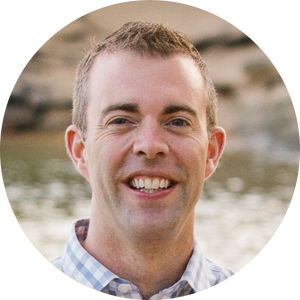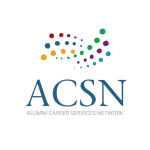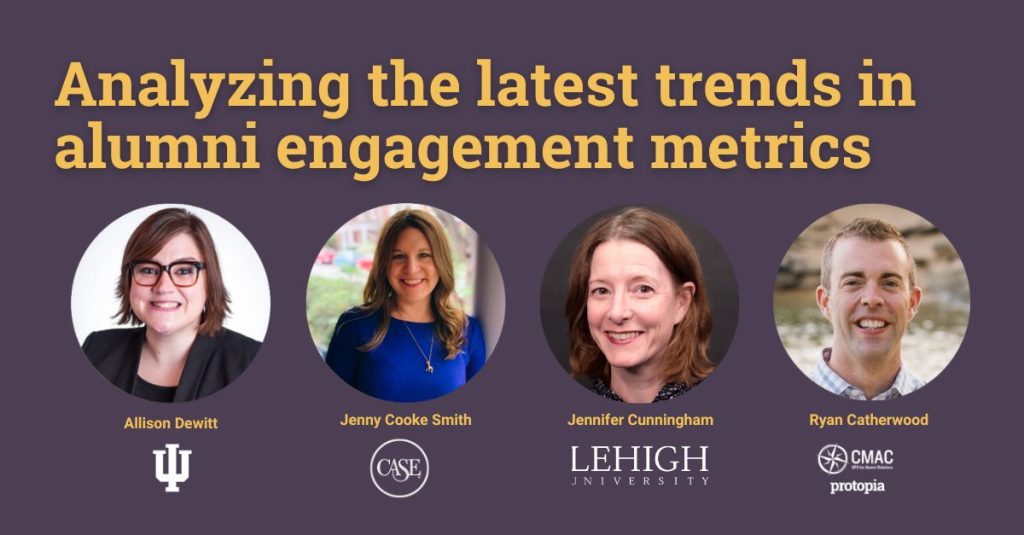
Ryan: I’m Ryan Catherwood. I am an engagement strategist and consultant working with Chris Marshall Advancement, consulting Washburn & McGoldrick, and of course my friends here at Protopia. And I love talking about engagement metrics. I can honestly say, and I’m thrilled to have three folks who are also experts on the field to say the least, and you’re in for a great conversation.
Before I introduce the panelists, I want to introduce Max Leisten, who’s the founder and CEO of Protopia, to offer a brief welcome message from the company.
Max: Hi, everybody. And thank you Jennifer for being here. That’s amazing. I really appreciate it. Ryan is very good at pulling rabbits out of his hat. So, thank you.
I’m really happy about this webinar to Ryan’s point. Alumni engagement metrics are one of our favorite topics here because it is an amazing tool for defining how you measure and benchmark engagement. But I wanted to start with just giving you a very quick overview of what we do.
If you’ve attended one of our webinars in the past, you probably already know what we do. So thank you and good to see you again. If this is your first time, I’m not going to tell you exactly how this works. Instead, let me tell you a story that’s particularly relevant from an engagement metrics perspective, and one that I often highlight how Protopia captures demand from students and alumni.
A senior at Denison University had spent a week working with a physician and wondered if that week was going to be enough for a letter of recommendation for medical school. And here is what happened.
We took that question, analyzed it using machine learning, also called Narrow AI (as I’ve learned at the CEAC conference in Edinburgh last week) we found 25 amazing alumni and prospective donors that could help.
As you could probably imagine, physicians that have had a similar undergraduate degree as this senior. And five prospects that Dennison frontline fundraisers really wanted to speak with.
This is my favorite visual when you think about the AEM framework. How does this translate to engagement and how do you measure it?
17 of 25 opened the email within the communication dimension, and 16 of those 17 were named prospects (LAG, major gift prospects). Those of them updated their data, which is what advancement shops really care about.
Three alumni help. They shared advice with the senior telling him that a week is probably not enough experience for a letter recommendation. But what was important is that those individuals volunteered and gave their time via a very simple mechanism.
What really everybody cares about, in particular the head of advancement, is that we had two lead alerts. The three that assisted had an assigned gift officer who we then promptly notified so that they may reach out and say thank you to that donor for helping a student.
This is what Protopia does at scale.
We make it simple for anybody in the community to volunteer and give their time and measure the AEM impact across those four dimensions because even the opening of an email is a meaningful event. That person may not act right now, but they are engaged with the institution, especially when you look at the underaged or unengaged constituents, as those are the ones that you want to bring back.
How is this different from other solutions out there? First, there is no new app. Your constituents are really busy. They don’t have time to sign up for anything or learn something new? They went to your school to be busy and successful. Second, it is quick and easy volunteering, fitting that busy life constituents live. And number three, everybody participates, everyone is enrolled.
I’m a firm believer that nearly every constituent desires to make an impact, you just have to make it easy, relevant and personalized for them. If that piqued your interest, we would love to talk about how we can help you scale that.
If you’re an institution with 20,000 alumni, half a million, or more, we can help and do it in a way that it’s really easy using AI. Let’s start now with our AEM metrics webinar!
Ryan: Thank you, Max. That was great. And you perfectly articulated what I find so compelling about Protopia and why I love being part of the team.
As we get started with the webinar, it would be fantastic if those of you who are attending live today, and I know there’s a bunch of people, go ahead and introduce yourself in the chat, mention what school you’re from and let’s get a lively conversation going on in the chat section.
We will be monitoring the chat if you have any questions. And of course, if you have any questions for Jenny, Jennifer or Allison during the course of the webinar, we will try to work in those questions during the webinar.
It may not be till towards the end of the webinar, but please go ahead and introduce yourselves where you’re from and of course, this is going to be recorded. Those folks who could not attend the webinar today, will be sending it out to everyone who couldn’t attend.
And for those people who might know someone interested in watching the webinar, feel free to send it around so people can sign up later and check it out.
We did have a little bit of a lineup change. Jill Mobley from Colby College could not join us. In her place I am happy to welcome Jennifer Cunningham, the Associate Vice President at Lehigh University in Bethlehem, Pennsylvania who also serves on the board of CASE District Two. She has graciously offered her time today to hop in at the last minute. And those of you who have heard Jennifer before know that she knows her stuff when it comes to engagement metrics.
Allison DeWitt is the Managing Director of Strategic Initiatives at the Indiana University Alumni Association. Grateful Allison for your time today. Thank you so much.
And Jenny Cook Smith, who is the all star of all stars when it comes to engagement metrics. We’re so grateful that you could join us. Jenny is the Senior Director of CASE Insight Solutions.
We have a great conversation planned today and I thought we could lead off the conversation with you Jenny and talk about the CASE survey on alumni engagement metrics. It’s now in its fourth year of reporting as you’ve been collecting a lot of data.
We had a great conversation at the CASE Summit back in July about how that was going. And I thought it would be really helpful to frame the conversation from your lens on the big picture when it comes to CASE alumni engagement metrics.
Jenny: It’s interesting as you said. We’re in our fourth year, but technically, as of yesterday, we actually just opened our survey for data collection and that will be the fifth year, which kind of blows my mind. I think one of the things I’ve been doing, I encourage all of you to think about as well, if we take a step back out of our hugely busy worlds and recognize how much has changed around perceptions of engagement metrics in five years. We know if things don’t change faster and higher, we do a ton of work in educating our new philanthropy and alumni relations professionals over the summer.
And it wasn’t like, why are we looking at metrics? It was the idea of, oh my gosh, of course, we need to understand everything about metrics.
So I think we should all give ourselves a pat on the back and I see all of those names of attendees here. There’s so many of you that are directly responsible for making that shift happen in our industry.
We can’t let this moment pass to no longer say “should we do this”? Is this gonna break everything if we do? As a very brief overview, what I would say is for those of you not as familiar with the CASE metrics.
Max did a great job of putting those four modes out. From a CASE perspective, we really look at it from the highest level, which is “are they engaged”? How do they engage, what is the behavior after engaging? And I think the critical question is “who is not engaged”? To me, the big picture is that we have some institutions that are starting to use that and think about what it means to their strategy.
And I’m looking at Allison and Jennifer here who were able to start thinking about this at that next level. To look at things that are perhaps beyond the CASE measures like engagement frequency during the year.
I’m looking at some of those other predictive analytics. And from a big picture, that’s what we want to see, right? That now the behavior is driving what may happen next as we think about the model in the survey. Institutions are really getting these results.
Ryan: That’s great to mention that the CASE metrics, the four modes, have been incredibly important in helping us organize our thoughts and our activities in a way that we can begin to look at them. They are not the only metrics that are measurable. For example, the London School of Economics is really interested in time and volunteer hours. I know Jennifer, you’ll probably mention net promoter score and other types of engagement metrics.
So let’s ask Jennifer first and then Allison, are you guys using the case AEM framework when it comes to your reporting structures? And what have you noticed about these categories for engagement and the work that goes into tracking and reporting them?
Jennifer: As Ryan said, I just was added to the panel. So this is not a setup or I’m trying to suck up to Jenny, but I literally keep this (AEM definitions) next to me in my pile and refer to it often, it’s the most exciting part about it.
I was involved in a lot of discussions on this, so even just hearing from my colleagues around the country and around the world was valuable in and of itself. But I think where we’re using them the most is the definitions.
We used to spend so much time fussing around with, well, what is a volunteer and does an online registration count and all of that stuff. I don’t think it was necessarily wasted time, but we spun our wheels and then you’d talk to a new group of people and they’d spin more. So literally, I just bring this up and say “just use this.”
I didn’t have time to scrub the data, so it is confidential, but I’ll just show you this is kind of our dashboard and one of the categories now is “other engagement.” We’ve got volunteers, giving, going, helping. And then also “other engagement.” What is that other engagement? And can we count that? Well, yes, we can.
Naming it experiential instead of events was just a really great decision. We use it, we count it. I’m on a constant quest across the university to get everybody to put in their data and we’ve gotten pretty far with that. I’m pretty confident that we have most of our events and volunteers in the system now.
Ryan: The word experiential has been incredibly impactful as you noted. And it’s not just events, right? There are other ways to participate or experience engagement, that’s not an event. Maybe it’s participating in a certain type of online community, for example, maybe it’s a book club, right? Where you are participating in a different way that’s not attending an event or watching something on the web.
And of course, the communications category, where we’re able to actually say yes, indeed, those interactions, whether they’re through emails or social media or other types of digital interactions through a website, filling out a survey, those are all to be captured to the best of our ability.
It’s not always easy. Alison, maybe you could share a little bit about how Indiana University is thinking about the CASE metrics.
Allison: I’m going say “yes” to everything Jennifer just said. I think we think a lot of the same way and use a lot of those resources that Jennifer just held up. We’re talking right now about how we code communications at Indiana University. As Jennifer said, it’s so helpful to us because we don’t have to reinvent the wheel.
We have the definitions and now we just need to go into conversations. What does that mean here at Indiana University? How does Indiana University fit into those categories? And it eliminates so much confusion and work in that space.
It also helps us talk about our work with other stakeholders. When we’re talking to our boards, when we’re talking to vice chancellors or deans, and we’re trying to encapsulate all this work in the engagement world, those definitions have been really helpful for us. Not only internally but also externally as we’re talking about the importance of this work and how to measure it.
Ryan: Good question in the comments about capturing social media data. How to measure it, let’s tackle that a little bit later, I’ve got a couple of ideas there.
I want to keep the conversation a little higher level just at the moment. Jenny, the US News and World Report situation has changed. We talked a little bit about this at CASE and it’s a big discussion in our field right now. They eliminated the alumni giving participation rate from their formula to rank universities. And it was really an important change that impacted a lot of things.
But can you make a prediction about what that means for higher ed over the coming years? Maybe for the folks on the webinar?
Jenny: You caught me in a reflective mood today. I am going do a little bit of what we did when we were talking about where we’ve come. Let’s just talk about where we are right now and then yes, let’s definitely think about predictions.
As you know, those participation rates were eliminated primarily for one key reason and that was that frankly, the standards changed. CASE changed the standards of how we count alumni going back to Jennifer’s point around so much of what’s important is establishing definitions. Defining alumni engagement meant that we had to define alumni. And in a way that made sense for our industry and our profession today and not what a magazine uses for rankings.
And so in thinking about alumni, those categories where multiple degreed were really treated a little differently because frankly, there are people that have spent a lot more time and money with our institutions. Breaking that hierarchy so that you no longer had all undergraduates together really simply meant that US News didn’t have anything to point people to to make those calculations.
They’ve known it was not a good metric for a long time, but that was the sort of final piece.
Moving forward, I do absolutely think US News and other rankings — we were just talking about Wall Street Journal rankings — will focus more on outcomes and outputs, so I think engagement will become part of the rankings. And that’s absolutely CASES’s stance and focus.
Let’s use this time in between to think about what moves the needle, what is meaningful engagement? How are we doing things to not just jockey and get really big numbers? So we feel good about it and get obsessed about it and find ourselves in the same boat that we were before? And lament that we were these people that made this happen.
I’m hearing a lot of things from the CASE perspective of people saying like we’re now looking at pipeline work and we’re really thinking about how engagement helps with leadership giving and not just getting them to get that $5 and those are amazing conversations.
And so I’m hoping we get more of that and this really allows us to do that.
Ryan: Really important point because you could imagine, as you said, a similar scenario where schools are constantly trying to scale and get bigger numbers. But what we know is that engagement, retention, retention of donors in particular, is what actually moves the needle. And so if we’re constantly focused on scale and not on depth of engagement, then we’re not doing our jobs particularly effectively in a philanthropy focused engagement strategy, right?
Allison, how does the Indiana University Alumni Association think about this change away from alumni giving and towards a more holistic approach?
Allison: We are having a lot of these same conversations right now. I think that the idea of breadth that you and Jenny just mentioned is really important and being able to understand those individual instances. I think it is foundational for us to be able to understand alumni engagement metrics and the importance of that.
But that’s just one piece of that story. For us at Indiana University, where our denominator continues to grow very quickly, just looking at that percentage of instances of engagement is tricky because if you don’t know the data story, it could look like we’re continually losing in that space, right? And that’s not true. For us to be able to move into this next phase of depth, it is important for us to be able to show that journey of deepening loyalty or engagement.
We’re doing a lot of work and having a lot of conversations right now on how are we partnering in particular with annual giving. How we are jointly approaching our constituents and utilizing best practices to make sure we are reaching the right people and helping them engage in a deeper way.
But how are we able to measure some of that work? To Jenny’s point, it may be outcomes and outputs, but what are those for us?
I know Chris Marshall is on the call today. He literally just heard me say this last week, but we’re going to have to explore new territory about what it means for us to understand those outcomes. So we’re trying a few different things.
We are doing some post experience reporting for us to say not just the NPS score, which is extremely important for us, and how many people were in the room or participated in that event. But who were those people? How many interactions happened after that? How many gifts for the first time? How many first time volunteers, how first time attendees came and how did those experiences actually measure against our goals? What were the goals of the event? For us, it’s no longer how many people can we get there, but were they the right people? That return on engagement is a huge conversation for us right now. We don’t have all the answers but we are very committed to exploring what that looks like.
Ryan: Yes, I think we’re all right there and it’s actually because the CASE AEM structure has provided us the framework to be able to think about deepening engagement. And technology has come along that helps us in that process of journey mapping and developing custom experiences for individuals. We keep talking about personalization,, and all of it is made possible when we’re able to track that activity in a meaningful way.
Jennifer, your team has included engagement goals in your $1 billion campaign. How are you tracking that and what are you doing to reach those goals?
Jennifer: We track all of that. 50% of all alumni are engaged in some throughout our campaign in addition to the billion plus dollars that we are trying to raise. Which by the way was a huge coup and a big nod to my former vice president, Joe Buck, who very readily agreed to put engagement goals in the campaign, which I know is not as common as we we’d all like.
We also have a goal that 55% of our volunteers in any given year, donate and 45% of our event attendees give.
I’m trying to push that number every year because one of the things we think about, as you said Allison, it’s not just enough to get bodies in the room. It’s who is in the room. And then what do you do with them afterwards? Setting these goals of converting people from just event attendees to volunteers to givers is really, really important and it makes all of us engagement officers, not just event planners. My silly joke is that if I could just take my whole budget and fire all the staff and just say to Lehigh alumni around the world: “You know, I’ll send you a free beer or a free pizza if you say that you clicked on a Facebook post.” That’s not engagement, but I would get my numbers.
What I really care about is moving people along that engagement continuum and with the reports that we’ve built, I can see how many events people have attended. Are they attending more events? Are they volunteering? Are they giving? And I think we’ve done a really great job of getting the entire advancement team involved in engagement and giving.
Just this morning, I had a meeting where we talked about a strategic plan and campaign rollout from our president. And it’s not just what flowers we are going to have on the table or who’s going to travel. It’s “who needs to be in this room?” Who’s the speaker going to be, let’s pick a really engaged volunteer who’s connected in Philadelphia, for example. Then what is everyone going to do to follow up? We have a meeting already set two months from now where we literally go through everyone in the room and we say “All right, who’s following up?” Is it a gift officer? Is it someone from my team? Is it someone we want to write an article about? So we’re really using the data that we’re collecting to do something, it’s not just reporting, it’s actually acting on the data.
Ryan: Yes, not just counting, right? It’s interesting that if you were to stop and you were to start from the beginning. As you alluded to, you look at the volunteer area. We know volunteers are three times more likely to give. You would think that the whole point is to create volunteers then, right? What would you do in order to influence scalable volunteerism? For example, how can we create as many volunteer opportunities as possible? And under that framework, you might do something totally different than being focused on events, right? Or even utilizing volunteers to help drive events.
I think we would all agree that as teams, we can drive events ourselves, right? We don’t necessarily need volunteers to help us select places, but yet that’s the primary way in which our volunteers are engaged. So there’s some interesting things that are evolving.
Allison, how are you all thinking about reporting and dashboards? We didn’t talk before about this, but do you have a dashboard that you might be able to share? If not, that’s no problem.
Could you just sort of talk about how you pull together the processes? I think we have a couple of folks that already asked about processes, and what enables you all to be able to produce the kind of dashboards and reports that drive these conversation around campus.
Allison: Absolutely. I’ll focus mostly just on what we call our alumni engagement dashboard, which is the one that’s based around our CASE metrics.
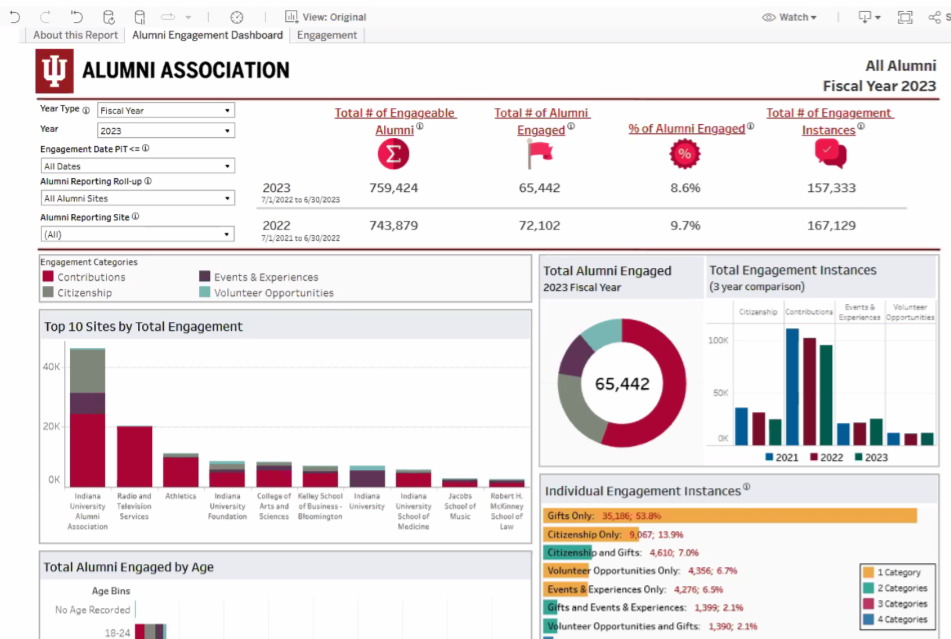
At Indiana University we are a decentralized system and a very large institution. This is the platform that we have built to report alumni engagement for the entire institution and for all of our campuses, our schools and units. Based around the CASE metrics of engagement.
We have snapshots up top showing our denominator to show the percentage of engaged alumni. We have definitions about what that means. What we are currently counting is not perfect. We’re not counting everything but working towards that.
We have made it easy for schools and units to be able to report to us, because this dashboard, if it was just relying on our alumni staff to tell us what you were doing, it would mean nothing.
Because at Indiana University engagement happens in so many ways throughout so many other places.
There is another tab where you can start to drill into units and locations. You can even look at regional maps — I’m happy to share screenshots with anyone after this and walk through that more.
But to the point about processes, the data is only as good as the data that’s in Blackboard or Crimson, our database system. That has been really important to us since we launched.
This is how we can continue to make processes easier for folks to get that data in. We’ve done some really cool things over the last year to encourage folks to use an event registration system that we provide centrally. Those systems didn’t talk to each other very well in the past but now they do, and our event registration system is automatically populating Blackboard, which then populates the dashboard.
Processes have been our focus since we launched. We think about how we can continue to make things easy because it’s not going to be used if it’s not.
Ryan: That was great. And going back to the notion of the communications category. There was a question about social media metrics. In my last job at a university, we broke it down in Blackboard by quarter. So an individual could be coded four times a year when they like or share.
We focused almost exclusively on Linkedin and Facebook because those are the easiest ones to get a person’s first and last name and potential access to their class as well as Snapchat, Instagram and TikTok. It’s hard to capture that data in any meaningful way when you can’t identify who those people are.
There’s a huge opportunity for schools to really focus on Linkedin and drive content on Linkedin in a way that we really haven’t done as well. Evertrue helps with some of that process from a technology standpoint. Any thoughts from Alison or Jennifer around social media capturing that data.
Jennifer: So we don’t have Evertrue yet. We’re in the middle, like many other schools, of a database conversion. A lot of the technology that I would love to use is on hold until we get through that beast. I actually have an assistant director of digital communities. Part of that job is to be an engagement officer, go to an event and mingle in the crowd.Talk to people and think about who might be a good volunteer or a good donor. She kind of lurks on social media that our marketing team does and then um puts that in manually, but it’s something for now.
It is beyond just “these people commented”, she’s actually engaging with them like an at an event, but it’s on Facebook and Linkedin.
Jenny: I would just add that definitions are important. We can’t use email open rates and clickthrough rates interchangeably. I want to go on record that per CASE definitions, it is clicking through on an email that is what gets counted in that number, not the open rate.
With privacy changes, I think it’s going to get trickier and trickier. We as a community still need to do a lot of talking and sharing around what that Communications category means to engagement.
A lot of you have had side conversations with me about that. I know there’s not an easy answer. I do think it is our entry point, thinking about the great pyramid that Max showed at the beginning. I think we can all agree that it’s the most passive. How we want to use Communication is thinking about what happens next.
We’ve been doing a bit of work with schools to see how many alumni even have to click to yield that next group, and using that data to forecast.
At the end of the day, worry about the Experiential and the Volunteer categories. And then about getting all the Communication.
Ryan: I would generally agree with that. Jennifer, your former colleague at Cornell University, Ashley Budd, is writing a book on email, right? Because it’s such an incredible tool and the clickthrough that is going to drive engagement in Communications. There’s a science and art around email Communications, and we often overlook it as a vehicle.
There is a methodology that’s proven to drive more engagement, more click-throughs and more access to content. But to your point, Jenny, it’s about that other end of the pyramid. The volunteerism and experiential categories, and driving participation that way.
Jenny, back to you for those who have not reviewed the CASE 2022 Insights report. Could you share some of the trends that popped up? I thought there were a couple of really interesting ones that you all discovered.
Jenny: I am going to do a quick screen share for folks that are visual learners like me. There are a number of things that stood out in the data. But if we were to condense it down to five, I would say, we continue to look at the correlation between staff and alumni relations, and investment and alumni relations particularly in the US. We’ve seen that both are really correlative to higher engagement overall.
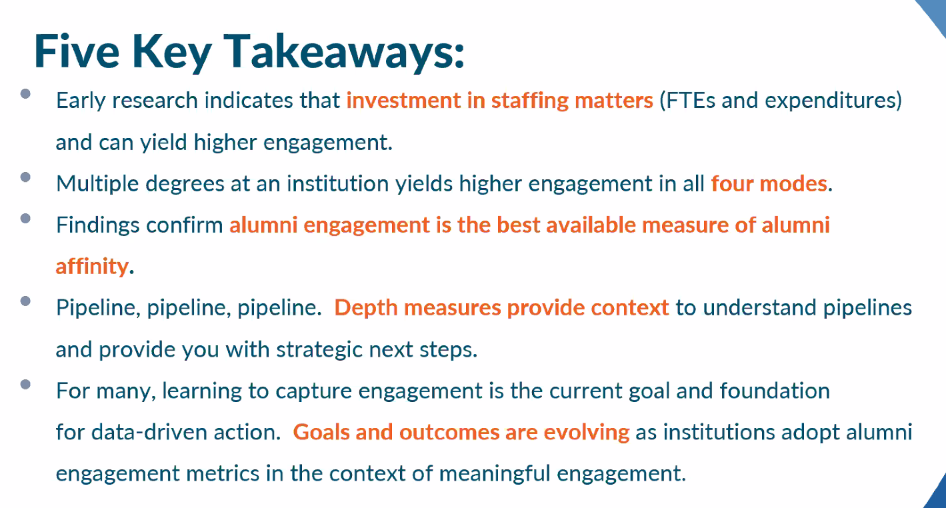
I think that makes sense when we think about it, but it’s also investing in our people overall. We’ve also looked at really the idea of engagement and staffing.
We’ve looked at alumni size and staffing. Allison, with 700,000 contactable alumni, you’re going have to make some choices on who you’re reaching out to, and understanding that relationship is key.
As we talked about earlier, we looked at multiple degreed alumni as a separate bucket, as they tend to engage at higher rates in all four modes than their peers. It’s the one finding we’ve seen in every year of the report, even the first year when data was kind of a grab bag. If you’re not thinking about talking to those multiple degree alumni, that’s a low hanging fruit.
I laugh at this third bullet because we put together these takeaways before US News and World Report took out giving. I think it’s still important to say that when we look at things like what portion of engagement comes from giving, we saw that it was essentially 19%.
Basically 81% of engagement was non-philanthropic, which quantitatively tells us that we missed a whole lot when we just focused on that one key measure. And we’ve talked a bit about this already, but these are depth measures.
Once you’ve started to collect enough data that you feel is representative, let’s try to understand what’s going on. What happens when they get engaged? I captured screenshots of Allison’s dashboards because I love seeing that interactive data.
I saw Chris Marshall’s note on “crawl, walk, run, fly.” To me, when we talk about flying, I’m thinking of the vision, the goals.
One of the things that to me is so critical about this moment that we’re in engagement is what I know many of you are doing. Why do we care about our alumni engaging? Why is it important that they have a connection to the mission of our institution? I think we’re starting to see those nuggets even going beyond philanthropy where institutions are really thinking about “Oh my God, what could happen once we have this?” And we could really tell those big picture stories better of the difference our alumni are making.
Ryan: I love Chris Marshall’s crawl-walk-run analogy. I think folks have heard that one before and I think about the run part as being able to develop effective donor mapping processes. An example of that would be an alum clicks through on an article and a newsletter, and then they receive another communication. They receive a follow-up solicitation relevant to that clickthrough.
To that point of crawling and walking, to get there you have to embrace new technology. The run is also, you know, an alum attended this event and mapping out what’s next for that person. There is the digital marketing component of the run and there’s the interpersonal relationship building component of what you were talking earlier.
What’s next for each of these individuals coming out to an event? Jennifer, what are you seeing and thinking about when it comes to using technology?
Jennifer: You’ve mentioned the word scale a few times. This is why I think for a long time we talked about mentoring, and everybody wants to do mentoring. There were a lot of professors who would start a mentoring program with a few alumni that they were still in touch with, and they would do all this manual stuff. Then technology came along.
We use PeopleGrove for scaling that. Mentoring to me, that’s really what the technology does is it scales, what we know works that what we know is good.
When you look at the Georgetown study about the ROI of college, when you look at the Wall Street Journal rankings that just came out, they’re really focused on outcomes and students not just getting jobs right after graduation, but 5, 10, 40 years later. What is the value of college? And it all traces back to a strong alumni network and the ability for students or alumni to tap into that network. That’s a unique selling point.
We’ve known that for a long time in our profession, but I can’t sit here with a piece of graph paper and match people up. But I can set up something like PeopleGrove.
Protopia does a lot of this stuff really well, too. To me, technology is really important. It’s how you scale it. There are a bunch of different products out there that I think work really well.
The other piece that I’ve learned the hard way is that you can’t just be like “oh, that sounds fun. And they’re giving me a free trial. So I’m gonna get my whole team on there.” You really have to have people dedicated to it.
We didn’t have that for a while and figured that out here at Lehigh.
It really isn’t just technology, it’s technology plus a smart human who cares about it. Who wakes up thinking about it every day, and waters and feeds it.
Ryan: And develops internal relationships, right? That it’s not just about marketing these technologies, whether it’s a platform or something like Protopia, that’s not an opt in. It’s getting folks at the university excited and building momentum and buy- in to use these tools. If you build it, they don’t just come.
Jennifer: Right and worse. I found a couple of instances where staff went out and basically bought the competitor to PeopleGrove because there was one or two things they didn’t like about PeopleGrove instead of coming to us and saying “Do you think they could tweak this thing or could we could we hack the system this way?” They just went out and spent several $1,000 in marketing and the alums are like “What? I’m on six different platforms.” We’re not that big.
Ryan: It’s tough to get folks to sign up for things, right? Rather than having so many confusing different options. Great question in the chat from Todd McCubbin. Are there plans to address self reported data for anomalies? For example, a university reports a high percentage of alumni as non-contactable. Some of those numbers don’t make sense.
Jenny: It is a little complicated because there are, I think, 11 or 13 states in the last year that have enacted new privacy laws. Some institutions are going to an opt-in method. I would say that some of those high non-contact rates may be accurate based on decisions that are being made.
There is a greater CASE plan to really do some education and research around what this means. So I think that’s one piece. The second piece is going back to the standards.
This idea of contactable alumni came from alumni engagement metrics, came from the task force and then we adopted the standards. And so now that is the number for all CASE surveys.
We’ve just implemented that last year, it’s now in the voluntary support of education. So the philanthropy survey that you’re filling out will have that tie between both.
We’re also in the process of doing some data auditing to say this was X percent higher than last year. Is that accurate? So that’s some incremental pieces.
But I think our world is making it harder and harder to have some data points and have an assumption on what we think will or will not be correct. Non-contactable as an aside because the data is all available.
If you ever have something that you know is not right, let us know and we’ll reach out and confirm it on our end as well.
Ryan: Jenny, back to the survey. As of 2021 there were 1,452 eligible schools for the US News and World Report best college rankings. That figure accounted for accredited institutions offering four year undergraduate degrees with over 200 students. Out of the 3,000, almost 4,000 degree granting postsecondary options.
Only 163 of those top 1,452 ranked institutions completed the CASE AEM survey. What does that mean to you?
Jenny: That’s a dagger to my heart.
Ryan: Sorry for the dagger. We’re all about tough questions here on these webinars.
Jenny: Shout out my fellow panelist Jennifer Cunningham because she’s actually done a lot of work on this. One of the things we heard from the beginning of this survey is that we like to network, right? There are a lot of alumni groups that are already coming together and doing some surveys. So we’ve worked really closely with groups like PCUAD and CAAE to help eliminate extra work.
I can tell you, I know that with PCUAD adopting the alumni engagement metrics survey, we’ve already got schools signed up that had not done it before. And we’re working on eliminating duplicative questions from the CAAE group.
If you’re here on this webinar, and you’re in those groups, and you’ve been on the fence for that, we hear you loud and clear, we’re trying our best.
I can’t remember if it was Jennifer or Allison, but we’re talking about institutions in a software conversion. We have absolutely heard that that has been a real tricky piece to this. And that’s going to improve as institutions are getting more settled.
The one piece I am still focusing on is if there are still philosophical reasons schools aren’t taking part. CASE is really open and interested to hear why? Because that to me shouldn’t be your barrier.
We understand that it is work collecting the minimal data. But I think we’ve solved some of those. I’ll have as many conversations as it takes because I think this is really so critical to our industry.
Ryan: One of the points that your report also raises is that the lack of data management professionals at so many universities. You’ve got to have someone to create that beautiful Tableau dashboard that Allison showed.
Jenny: We saw huge turnover numbers over the past couple of years, and we get it. If you’ve lost alumni advancement staff, we do not expect that someone is then taking time to fill out a survey instead of processing gifts. So I think that’s a little bit of our world too.
Ryan: The last question is a “finish this sentence” question. It’s a bit of a curveball. We’ll see how this one goes. Allison, you first, then Jennifer, then Jenny.
Finish this sentence for me in any way you want: The correlation between engagement and giving is blank.
Allison: So important. I think it’s implicitly understood but often explicitly unmeasured. We all know that it matters and we have great stats from folks like CASE who are telling us that this is inherently happening.
But we need to do a better job of explicitly showing a return on engagement, and making data driven decisions off of that.
Jennifer: It’s like a Mobius strip. You know, one of those things that just like keeps going and that’s sort of infinite. Giving is a form of engagement. We’ve all had instances where you give to an organization because you care about it, but you don’t have time.
But those that give time too, they probably give more money too. They’re inextricable. The more you care about an organization, the more you want to give. Depending on where you are in your life, you might give more time, you might give more money, you might give both, you might give none.
It really is just this amorphous, constant relationship.
Jenny: I feel like it’s the part of the story we can measure and I’m really excited about that. As we think about a future where we’re less siloed and we only have this little bit that we get to build upon, that is the story.
Ryan: I’ve often thought that the metrics make it clear. The category of giving is one way to participate, to engage. But is that the point of it?
Jennifer: I think it depends on the point of time in the university and in your life. It depends on what you value, what your institution values from you. It’s not, it’s not a yes or no.
Ryan: We have a regular web show with Chris Marshall called Alumless and we had Howard Wolf on from Stanford a while ago. He would definitely say that no, in fact the point of engagement is not explicitly around philanthropy. There are many, many more reasons to drive engagement that have repercussions across the university.
I can hear those who are leading independent alumni associations not underneath advancement just saying, no, it’s not the point of it all. I think it really does depend on the university but they’re inextricably linked and at most universities that is the point, right? The Vice President of Advancement is always there to drive philanthropic giving. And their report card is about dollars.
Let’s give guys just a couple more minutes with this awesome panel and I hope you’ve enjoyed this conversation as much as I have.
Jenny, maybe you could just highlight some of the important CASE insights evolutions that you’re working on, that you might be able to share with listeners.
Jenny: I’ve really enjoyed seeing some of the questions in the chat. I really value Andy Shaindlin’s brain.
First, this is evolving. I think our framework is in place. But I think within that framework, there’s a lot of questions. I saw there was even a question on the types of volunteers.
I think Jennifer was in those conversations a couple of years ago where we discussed that maybe there’s two types of volunteers, and it kind of made our minds explode.
We’re at the stage where you all need to be capturing this in your own programs and measuring it. And then that’s what’s going to get us at CASE to think further. How might we adopt that in the survey? So please, let’s keep the conversation going.
One area we’ve done some testing on and found institutions weren’t quite ready, is retention of engagement. Did they engage more years in a row? That’s definitely an area we’d like to expand on in the future. Did they not engage last year but did so this year? Who cares if they’re brand new or reactivated, but at least did they come back? And then this idea of when they graduated and does that have an effect on engagement, I think is going to be critical to our stories.
What Jennifer said, it depends on the time of life. It depends on the institution, depends on a lot of things. Finally, what I would say is we’re actually pulling together a benchmarking group of schools next month and Indiana is part of that group. We are really excited to start saying these are the stories we’re hearing around engagement, and this is how people are using this as this is where we may go next.
So a little bit TBD as we hopefully have future conversations with all of you.
Ryan: Allison, then Jennifer, we’re going to predict the future again. What do you think we will be saying about alumni engagement metrics in a few years from now?
Allison: To Jenny’s point, I hope that we’re able as an advancement community to talk about those same metrics that we might talk about from a giving standpoint or an annual giving standpoint.
Not just us who sit in that alumni engagement seat, but being able to talk about just like we talk about donor retention and dollars, and all the different breakouts and ways that we understand and utilize data philanthropically.
I hope that not just us but our entire advancement is able to also see the value and be able to speak to alumni engagement metrics in that same space. Hats off to Jennifer and Lehigh because I think the work that you’re doing including that in campaign planning and measurement is a huge step in the right direction.
Ryan: Yes, I think the CASE metrics indicate that it’s 11 years after graduation that people are really hitting their stride for giving. But how many times does someone need to be engaged over the course of those 11 years. If we could do more engagement early on, will that number come down?
Jennifer: I actually did some of that work at Cornell as the Senior Director of Metrics under Chris Marshall. I did some correlations between event attendance and giving, and it was exactly what you’d think and hope.
I think for the future of alumni engagement metrics, I hope and expect that at least the way that our president here at Lehigh is talking about, really is about student outcomes. Not just their salaries, but bigger than that. And realizing that the alumni network is the unique selling point.
You know, we all have our strengths as the alumni network and the personalities of our universities.
I think that as the world of higher ed keeps getting more scrutinized by different people, really looking at alumni engagement as one of the factors that kids choose when they go to school.
I think they do that now, but more anecdotal. Our metrics are going to become even more important, especially around the career and the mentoring piece of it.
The event attendance is great — we do these amazing tailgates. We know we’re going get people, but how many alumni are actually contributing to the success of the network as a whole with students and with other alums? So that’s where I hope it will go, if I’m reading the tea leaves correctly.
Ryan: I couldn’t agree more. Really great last point.
Thank you so much, Jennifer Cunningham, Alison Dewitt, and Jenny Cook Smith for joining. Thanks to all the listeners today for tuning in. This was a great conversation today.
I’ll be back again October 11th for another webinar about donor experiences, donor relations. What’s the connection between these concepts and we’re building out a panel for that one. Mark your calendar!












